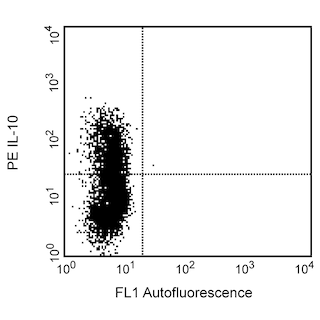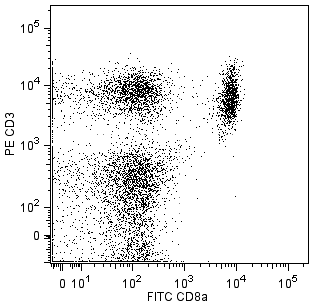-
Training
- Flow Cytometry Basic Training
-
Product-Based Training
- BD FACSDiscover™ S8 Cell Sorter Product Training
- Accuri C6 Plus Product-Based Training
- FACSAria Product Based Training
- FACSCanto Product-Based Training
- FACSLyric Product-Based Training
- FACSMelody Product-Based Training
- FACSymphony Product-Based Training
- HTS Product-Based Training
- LSRFortessa Product-Based Training
- Advanced Training
-
- BD FACSDiscover™ S8 Cell Sorter Product Training
- Accuri C6 Plus Product-Based Training
- FACSAria Product Based Training
- FACSCanto Product-Based Training
- FACSLyric Product-Based Training
- FACSMelody Product-Based Training
- FACSymphony Product-Based Training
- HTS Product-Based Training
- LSRFortessa Product-Based Training
- United States (English)
-
Change country/language
Old Browser
This page has been recently translated and is available in French now.
Looks like you're visiting us from {countryName}.
Would you like to stay on the current country site or be switched to your country?
![PE Rat Anti-Mouse Vα 11.1, 11.2[b,d] TCR](/content/dam/bdb/products/global/reagents/flow-cytometry-reagents/research-reagents/single-color-antibodies-ruo/553xxx/5532xx/553223_base/01465A_553223_image1.png)
![PE Rat Anti-Mouse Vα 11.1, 11.2[b,d] TCR](/content/dam/bdb/products/global/reagents/flow-cytometry-reagents/research-reagents/single-color-antibodies-ruo/553xxx/5532xx/553223_base/01465A_553223_image1.png)
.png)
![PE Rat Anti-Mouse Vα 11.1, 11.2[b,d] TCR](/content/dam/bdb/products/global/reagents/flow-cytometry-reagents/research-reagents/single-color-antibodies-ruo/553xxx/5532xx/553223_base/01465A_553223_image1.png)
Two-color analysis of the expression of Vα 11.1, 11.2[b,d] TCR on peripheral lymphocytes. C57BL/6 lymph node cells were incubated simultaneously with PE-conjugated RR8-1, FITC-conjugated RM4-5 (anti-CD4, Cat. No. 553046/553047), and FITC-conjugated 53-6.7 (anti-CD8a, Cat. No. 553030/553031) monoclonal antibodies. Flow cytometry was performed on a FACScan™ (BDIS, San Jose, CA).
.png)
![PE Rat Anti-Mouse Vα 11.1, 11.2[b,d] TCR](/content/dam/bdb/products/global/reagents/flow-cytometry-reagents/research-reagents/single-color-antibodies-ruo/553xxx/5532xx/553223_base/01465A_553223_image1.png)
BD Pharmingen™ PE Rat Anti-Mouse Vα 11.1, 11.2[b,d] TCR
.png)
Regulatory Status Legend
Any use of products other than the permitted use without the express written authorization of Becton, Dickinson and Company is strictly prohibited.
Preparation And Storage
Recommended Assay Procedures
For flow cytometry of cell suspensions from peripheral lymphoid tissues, it is recommended that multicolor staining be performed to distinguish T lymphocytes from non-T cells. This antibody conjugate has been tested by immunofluorescent staining (≤ 1 μg/million cells) with flow cytometric analysis.
Product Notices
- Since applications vary, each investigator should titrate the reagent to obtain optimal results.
- Caution: Sodium azide yields highly toxic hydrazoic acid under acidic conditions. Dilute azide compounds in running water before discarding to avoid accumulation of potentially explosive deposits in plumbing.
- For fluorochrome spectra and suitable instrument settings, please refer to our Multicolor Flow Cytometry web page at www.bdbiosciences.com/colors.
- Please refer to www.bdbiosciences.com/us/s/resources for technical protocols.
Companion Products

.png?imwidth=320)

The RR8-1 monoclonal antibody specifically recognizes the Vα 11.1 and Vα 11.2, but not Vα 11.3 T-cell Receptors (TCR) of mice having the b (e.g., C57BL) and d (e.g., DBA/1, DBA/2, NZW) haplotypes of Tcra gene complex. RR8-1 antibody does not react with strains having the a (e.g., A, AKR, BALB/c, CBA, C3H/He) or c (e.g., NZB, SJL, SWR, NOD) Tcra haplotypes. Plate-bound RR8-1 antibody activates Vα 11.1, 11.2[b,d] TCR-bearing T lymphocytes.

Development References (1)
-
Jameson SC, Nakajima PB, Brooks JL, Heath W, Kanagawa O, Gascoigne NR. The T cell receptor V alpha 11 gene family. Analysis of allelic sequence polymorphism and demonstration of J alpha region-dependent recognition by allele-specific antibodies. J Immunol. 1991; 147(9):3185-3193. (Immunogen). View Reference
Please refer to Support Documents for Quality Certificates
Global - Refer to manufacturer's instructions for use and related User Manuals and Technical data sheets before using this products as described
Comparisons, where applicable, are made against older BD Technology, manual methods or are general performance claims. Comparisons are not made against non-BD technologies, unless otherwise noted.
For Research Use Only. Not for use in diagnostic or therapeutic procedures.
Report a Site Issue
This form is intended to help us improve our website experience. For other support, please visit our Contact Us page.